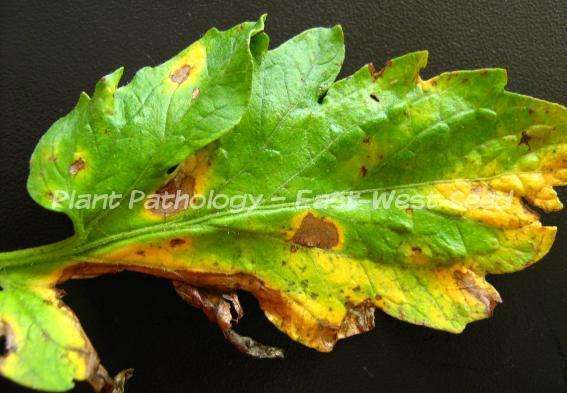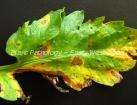Causal Agent:
Fungus (Corynespora cassiicola)
| Characteristic Symptoms: | |
 |
Initially, small, pinpoint, dark brown or water-soaked spots appear on the upper surface of the older leaves that eventually increase in size (up to 2 cm diameter), becoming circular and with concentric rings. |
 |
Spots on the upper leaf surface are pale yellow and indistinct. |
 |
Leaf spots are almost similar to early blight except for the absence of intense yellowing around the spot, which is a characteristic of early blight disease. |
 |
Several spots can be observed on the leaf surface under favorable conditions leading to blighting of the leaves. |
| Conditions for Disease Development: | |
 |
The disease is favored by moderate temperatures (20-28°C) and extended periods of leaf wetness (16h or more).
|
 |
The fungus infects many crops, including pepper, cucumber, papaya, ornamentals and weeds.
|
 |
The fungus can colonize weeds or other crop and remains viable for up to two years. |
 |
The disease is spread by air-borne conidia/spores.
|
 |
Rain splashes or windblown soil particles create wounds in the fruit for spores to enter. |
| Management and Control: | |
 |
Use disease-free seedlings.
|
 |
Proper plant spacing can help reduce extended periods of leaf wetness.
|
 |
Maintain good field sanitation (e.g. remove and burn heavily affected leaves; remove weeds).
|
 |
Preventive application of chlorothalonil (e.g. Daconil®, Agronil®, Yoda®, Rover®, Yoda 500Ⓡ) and mancozeb (e.g. Attain M-80Ⓡ, Achem Mancozeb 80 WPⓇ, Micron 80 WOⓇ, VanzebⓇ) |
To view other diseases, click here.
Need more help? Ask the Doctor.






